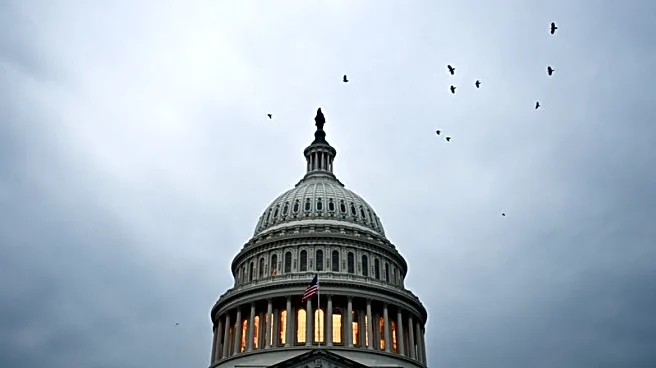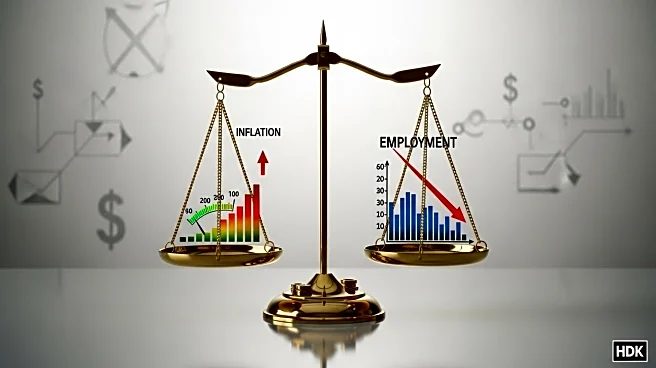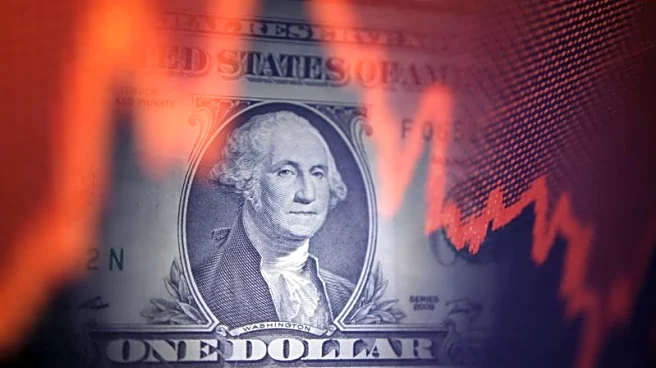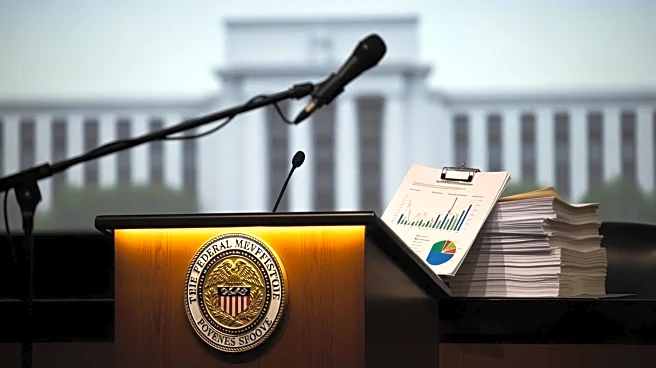What's Happening?
Consumer sentiment in the U.S. has reached its lowest level since May, driven by concerns over high prices and a weakening labor market, according to a survey by the University of Michigan. The index of consumer
sentiment fell slightly to 55 in October, reflecting a pessimistic outlook on personal finances and purchasing conditions for durable goods. Joanne Hsu, director of the university's surveys, highlighted that consumers are worried about pocketbook issues such as high prices and job prospects. The Federal Reserve Bank of New York corroborated these findings, noting increased consumer pessimism regarding price pressures and the job market. Inflation expectations have risen, with projections for the next year increasing to 3.4% from 3.2% in August, and five-year expectations rising to 3% from 2.9%. In response to weak hiring, the Federal Reserve cut the main interest rate by a quarter percentage point last month, marking the first monetary easing of the year.
Why It's Important?
The persistent weak consumer sentiment and job anxiety have significant implications for the U.S. economy. The Federal Reserve's decision to cut interest rates reflects concerns about the labor market's softening and the potential for further economic downturns. The rising inflation expectations pose challenges to the Fed's mandate to ensure price stability, with tariffs potentially exacerbating price pressures. Vulnerable groups, such as young workers and Black workers, are experiencing higher unemployment rates, which could lead to increased economic inequality. Policymakers are in a difficult position, balancing the risks of inflation and employment, as highlighted by Fed Governor Michael Barr. The situation underscores the complexity of navigating monetary policy in an environment with elevated risks on both sides of the Federal Open Market Committee's mandate.
What's Next?
The Federal Reserve is expected to make two additional quarter-point reductions in the benchmark interest rate by the end of the year, as forecasted by central bank officials. This move aims to address the softening labor market and mitigate potential adverse shocks to demand. Policymakers will continue to monitor inflation trends and employment data closely, adjusting monetary policy as necessary to balance the dual mandate of price stability and maximum employment. The impact of stricter immigration controls on the labor supply and ongoing tariff discussions will also be key factors influencing future economic policy decisions.
Beyond the Headlines
The current economic situation may lead to long-term shifts in consumer behavior and business strategies. Companies might need to adapt to changing consumer preferences and spending patterns, while policymakers could face pressure to implement measures that address economic inequality and support vulnerable populations. The interplay between inflation, employment, and immigration policies could have lasting effects on the U.S. economic landscape, influencing future legislative and regulatory actions.












